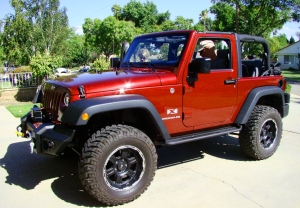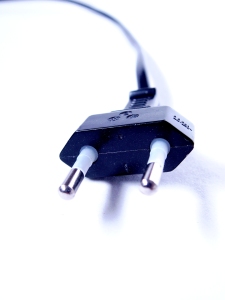New Poll! Your Biggest Challenge in Moving to Italy
Posted: 07/25/2011 Filed under: Moving 1 CommentHelp me to figure out the best topics for new posts here. To give the most helpful information, I am asking readers to let me know what was or is making their PCS harder.
Share the most challenging part of your PCS to Italy. Here’s the poll:
Should I Bring My SUV to Italy?
Posted: 06/26/2011 Filed under: Moving, Where to start Leave a comment A worry for folks moving to Italy is the POV, more commonly known as the family car.
A worry for folks moving to Italy is the POV, more commonly known as the family car.
I have discussed in other posts that driving in Italy is different. The roads are narrower and more winding. The drivers are more aggressive. Parking is at a premium in many places. This fact brings up some questions.
Should I bring my SUV/truck/mini-van?
Is it easy to buy a car once I am in Italy?
These are all common questions when families are getting ready to PCS. I think everyone has different priorities for their situation. There is no right or wrong answer. Here are some considerations will help you make your decision.
Driving Abilities
I have horrible depth perception. I can’t parallel park into a tight space and am nervous if I squeeze through tight spaces when driving. That being said, I would not bring a large vehicle such as a Suburban or a full-size truck to Italy. I know I see many people driving full-sized trucks and large SUV’s.
If you are confident in your driving abilities and don’t necessarily mind searching to find a parking space, it may be okay to bring a larger vehicle with you to Italy. If you plan on living in downtown Vicenza, just remember the parking spaces are not geared toward larger vehicles.
Family Size
If you have more than two kids, you may want to have a larger vehicle. If your family can’t fit in a regular full-sized car, parking problems become irrelevant. Smaller SUVs and mini vans seem to work out well here. Sometimes the parking spaces are a bit tight, but definitely not too small. I have seen a large family on post with a full-sized van that seems to make it work.
Value of Vehicle
If you are a person who has a very valuable vehicle or someone who is extremely upset at door dings, Italy might punish you. Because of the tight parking spaces and the general disregard of vehicles, small scratches, dents and door dings are common. I would not bring a very expensive new vehicle here. That being said, I have seen a Cadillac Escalade driving around on post. If you are a “car person”, it might be worth the risk.
Purchasing a Car Here
If you are interested, many used cars are available at different times. Check out the MWR Marketplace on the Vicenza MWR Website for a listing of used cars. Used cars are a good bet for those wanting a second vehicle. Registering cars you buy here is much the same as you register a car that you bring to Italy with you. New car sales located near the main gate is always an option if you are in the market for a new car.
Think about these points. Whether you ship one or two vehicles or buy a car when you arrive, every person must take a course and test to receive a SETAF driver’s license. Unless you ship your vehicle many months before your move, there will be plenty of time to prepare for the test before your car actually arrives.
Electrical Appliances, Should I Bring Them to Italy?
Posted: 06/12/2011 Filed under: Moving, Where to start | Tags: Electricity in Italy Leave a commentI recently received a note from someone asking what sort of things to bring with them to Italy. I know that I wondered the same thing when I moved. I am pretty sure everyone who has not lived outside the United States has had the same thoughts. I decided to share what I know and what I think about the topic.
Voltage in Italy Verses Voltage in the United States
Many countries electrical systems differ. These differences stem way back to when Edison invented the light bulb. After doing a little research, I decided to forgo any further explanation. (If you are really interested, Bright Hub has a pretty basic article on the subject.)
Most of Europe operates on 220 to 240 Volts. The United States, Canada and most countries in Central America use 110 Volts.
Why Voltage Matters
In the United States, all appliances are wired to use 110 Volts of electricity. If you try to use appliances on higher voltages, they will likely short out, spark or catch fire. Even if an appliance initially appears to work using only an adapter plug, it will not last long if the voltages is too high. Once your appliance has shorted out, it won’t be repairable.
How Do I Know If An Appliance is Dual Voltage?
Many electronics are dual voltage. If you have the manual on an appliance, read it. Prior to moving to Italy, I ignored the section mentioning voltage, because it meant nothing to me. If you have tossed the manual, you can still find the voltage information. Every electrical appliance has a line on it somewhere that will tell you the voltage.
My camera battery chargers are an example of dual voltage electronics. The charger has printed information on the back of it that states “Input: 100-240V” and a bunch of other stuff. This means it will work in the U.S. and in Italy. Sometimes it is hard to find this information. Look on the back, bottom or on the appliance plug.
A Note About Dual Voltage Appliances
Just because an appliance will work in Italy, it does not mean it will work the same. My hair dryer and flat-iron are both dual voltage. Unfortunately, they only work on the highest setting. I am not able to adjust the temperature on either one of them. I just use them anyway, because I did not use the temperature settings much. Just know that surprises happen!
Adapters are not the same thing as converters. Don’t get the two confused or you will end up frying your electrical stuff. An expatriate website goes into great detail here about the difference.
Electrical Adapters
Plug styles are different in many countries. The American 2-Prong plug-in does not fit anything here. Even something is dual-voltage, you can’t plug it in, because of the plug-in. You will need adapters to put on the plug so it fits the European-style plug-in. If you use an appliance that is not dual-voltage, you can put an adapter on and plug it in, but the voltage will likely ruin it.
Voltage Converters
A converter is a device that actually changes the voltage from 220 volts to 110 volts. You can plug the converter into an electrical outlet and then plug your stuff into it. Everything works fine then. Make sure you get a converter large enough to handle the electrical wattage your appliance uses. If you are plugging in a DS Game System to charge, a small one (like the travel ones for less than 50 watts) will work. However, if you need a converter for your television, you will need to get one that can handle several hundred watts.
Don’t use clocks with voltage converters, because they will not work correctly. Trust me on this one!
Although the topic of watts and volts seems confusing, it is pretty easy to adapt to once you arrive in Italy. One last word to you, go to the thrift shop to buy adapters and save yourself a few dollars! You will use tons of them!
Moving Tips for those about to PCS – A Roundup
Posted: 05/28/2011 Filed under: Moving, Uncategorized | Tags: PCS Tips Leave a commentI’ve thought a lot about how hard it is to move. Even though I have only been here a year, we are already gathering junk that will have to go somewhere in two years. Moving is right at the bottom of my list of things I like or want to do. For those families who are career military, moving is second nature and many spouses have moving down to an art form. For me and I am sure for others…moving just stinks.
Because I am not so great at the whole move thing, I am sharing a round-up of posts I have found around the internet.
- Military Money has a great post on courtesy of USAA on The Top Seven Mistakes Made When Moving. I know I am guilty of number six on the list!
- Married to the Army has a great deal of information on a variety of move issues in 19 Must Know Tips Tips for an Army PCS Move. I am pretty sure this information is good for any military move or move in general!
- Military Avenue grabs some tips from USAA on How to Prepare Your Kids for A Move.
- For anyone who is changing duty stations the website Military Duty Stations has information duty stations around the world.
Anyone else have any great tips on moving?





